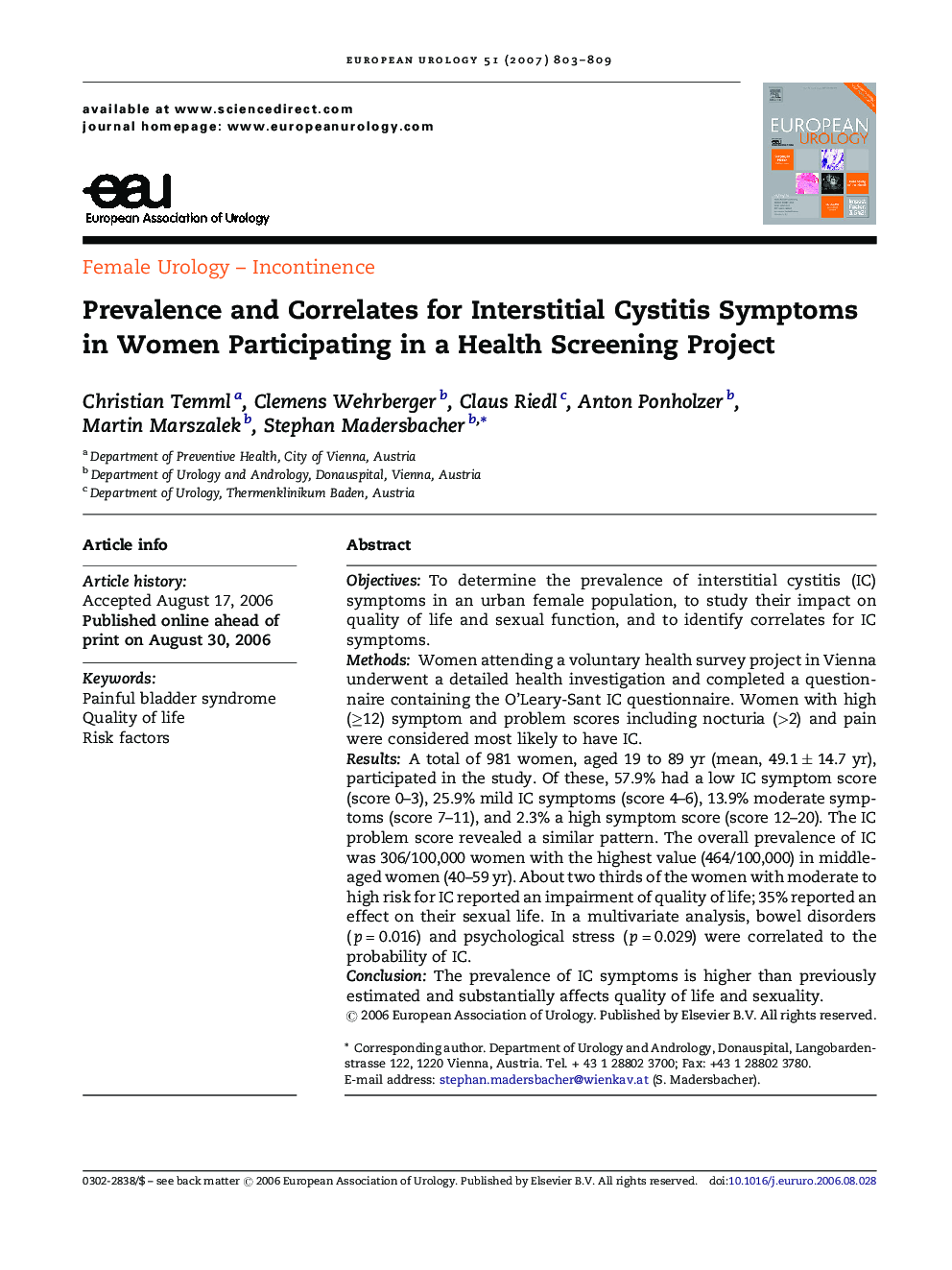| Article ID | Journal | Published Year | Pages | File Type |
|---|---|---|---|---|
| 3929806 | European Urology | 2007 | 7 Pages |
ObjectivesTo determine the prevalence of interstitial cystitis (IC) symptoms in an urban female population, to study their impact on quality of life and sexual function, and to identify correlates for IC symptoms.MethodsWomen attending a voluntary health survey project in Vienna underwent a detailed health investigation and completed a questionnaire containing the O’Leary-Sant IC questionnaire. Women with high (≥12) symptom and problem scores including nocturia (>2) and pain were considered most likely to have IC.ResultsA total of 981 women, aged 19 to 89 yr (mean, 49.1 ± 14.7 yr), participated in the study. Of these, 57.9% had a low IC symptom score (score 0–3), 25.9% mild IC symptoms (score 4–6), 13.9% moderate symptoms (score 7–11), and 2.3% a high symptom score (score 12–20). The IC problem score revealed a similar pattern. The overall prevalence of IC was 306/100,000 women with the highest value (464/100,000) in middle-aged women (40–59 yr). About two thirds of the women with moderate to high risk for IC reported an impairment of quality of life; 35% reported an effect on their sexual life. In a multivariate analysis, bowel disorders (p = 0.016) and psychological stress (p = 0.029) were correlated to the probability of IC.ConclusionThe prevalence of IC symptoms is higher than previously estimated and substantially affects quality of life and sexuality.
